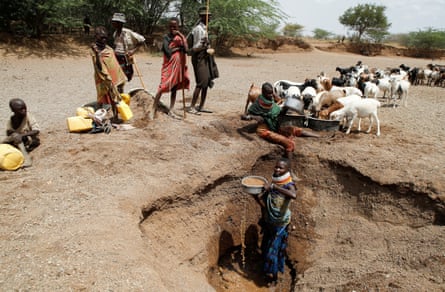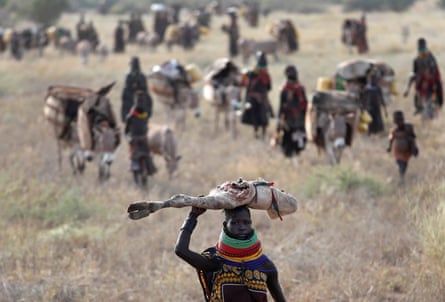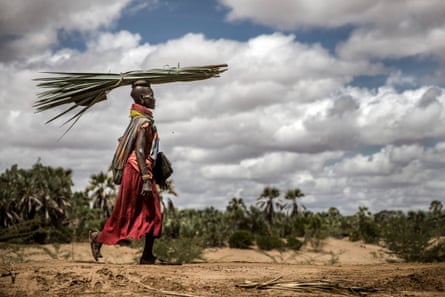A collaboration between African and American researchers and a community living in one of the most hostile landscapes of northern Kenya has uncovered key genetic adaptations that explain how pastoralist people have been able to thrive in the region.
Underlying the population’s abilities to live in Turkana, a place defined by extreme heat, water scarcity and limited vegetation, has been hundreds of years of natural selection, according to a study published in Science.
It shows how the activity of key human genes has changed over millennia and the findings place “Turkana and sub-Saharan Africa at the forefront of genomic research, a field where Indigenous populations have historically been underrepresented”, according to Charles Miano, one of the study’s co-authors and a postgraduate student at the Kenya Medical Research Institute (Kemri).
The research sequenced 367 whole genomes and analysed more than 7m genetic variants, identifying several regions of the genome under natural selection. It was conducted through the Turkana Health and Genomics Project (THGP), an initiative bringing together researchers from Kenya and the US, including Kemri, the Turkana Basin Institute (TBI), Vanderbilt University in Tennessee and the University of California, Berkeley.
The genomic analysis found eight regions of DNA that had undergone natural selection but one gene, STC1, expressed in the kidneys, showed exceptionally strong evidence of humans adapting to extreme environments. Evidence included the body’s response to dehydration and processing purine-rich foods such as meat and blood, staples of the Turkana people’s diet.

Turkana stretches across a large swathe of northern Kenya, one of the most arid regions in the world, where shade is scarce and water even more rare. Rainfall arrives in short, unpredictable bursts, and securing enough water for themselves and their herds of cattle, goats and camels is a daily chore. Fetching water can involve journeys of many hours each day across hot terrain devoid of vegetation.
About 70% to 80% of the community’s diet comes from animal sources, mostly milk, blood and meat, reflecting resourcefulness and adaptation to scarcity, which is common among pastoralist societies around the world living in environments where crops cannot grow and where markets are too far away to be accessed on foot.
Yet, after years of documenting the Turkana people’s lifestyle and studying blood and urine samples to assess their health, researchers found that, although the community consumes too much purine, which should lead to gout, the condition rarely appears among the Turkana.
“About 90% of the people assessed were dehydrated but generally healthy,” said Prof Julien Ayroles, from the University of California, Berkeley, one of the project’s co-principal investigators. “The Turkana have maintained their traditional way of life for thousands of years, providing us with an extraordinary window into human adaptation.”
Genetic adaptations are believed to have emerged about 5,000 years ago, coinciding with the aridification of northern Africa, the study suggesting that as the region became drier, natural selection favoured variants that enhanced survival under arid conditions.

“This research demonstrates how our ancestors adapted to dramatic climate shifts through genetic evolution,” said Dr Epem Esekon, responsible for Turkana county’s health and sanitation sector.
However, as more members of the Turkana community move to towns and cities, the same adaptations that once protected them may now increase risks of chronic lifestyle diseases, a phenomenon known as “evolutionary mismatch”. This occurs when adaptations shaped by one environment become liabilities in another, highlighting how rapid lifestyle changes interact with deep evolutionary history.
When the researchers compared biomarkers and gene expression – the process by which information encoded in a gene is turned into a function – in the genomes of city-dwelling Turkana people with their kin still living in the villages, they found an imbalance of gene expression that may predispose them to chronic diseases such as hypertension or obesity, which are more common in urban settings where diets, water availability and activity patterns are radically different.
“Understanding these adaptations will guide health programmes for the Turkana, especially as some shift from traditional pastoralism to city life,” said Miano.
As the world faces rapid environmental change, the Turkana people’s story offers inspiration and practical insights. For generations, the researchers said, this community has developed and maintained sophisticated strategies for surviving in a challenging and variable environment, knowledge that becomes increasingly valuable as the climate crisis creates new survival challenges.

For close to a decade, the project centred on co-production of knowledge, combining genomic science with ecological and anthropological expertise. The agenda emerged from dialogue with Turkana elders, scientists, chiefs and community members, conversations about health, diet and change, often in the evening around a campfire.
“Working with the Turkana has been transformative for this study,” said Dr Sospeter Ngoci Njeru, a co-principal investigator and deputy director at Kemri’s Centre for Community Driven Research. “Their insights into their environment, lifestyle and health have been essential to connecting our genetic findings to real-world biology and survival strategies.”
Dr Dino Martins, director of the TBI, says the deep ecological connection and the adaptation to one of the Earth’s hottest and most arid environments provides lessons for how climate continues to shape human biology and health. “The discovery adds another important piece of knowledge to our wider understanding of human evolution,” he said.
Researchers say other pastoralist communities in similar environments in east Africa, including the Rendille, Samburu, Borana, Merille, Karamojong and Toposa, are likely to share this adaptation.
The research team will create a podcast in the Turkana language to share the study’s findings and also plan to offer the community practical health considerations that arise from rapidly changing lifestyles.

 3 months ago
61
3 months ago
61

















































